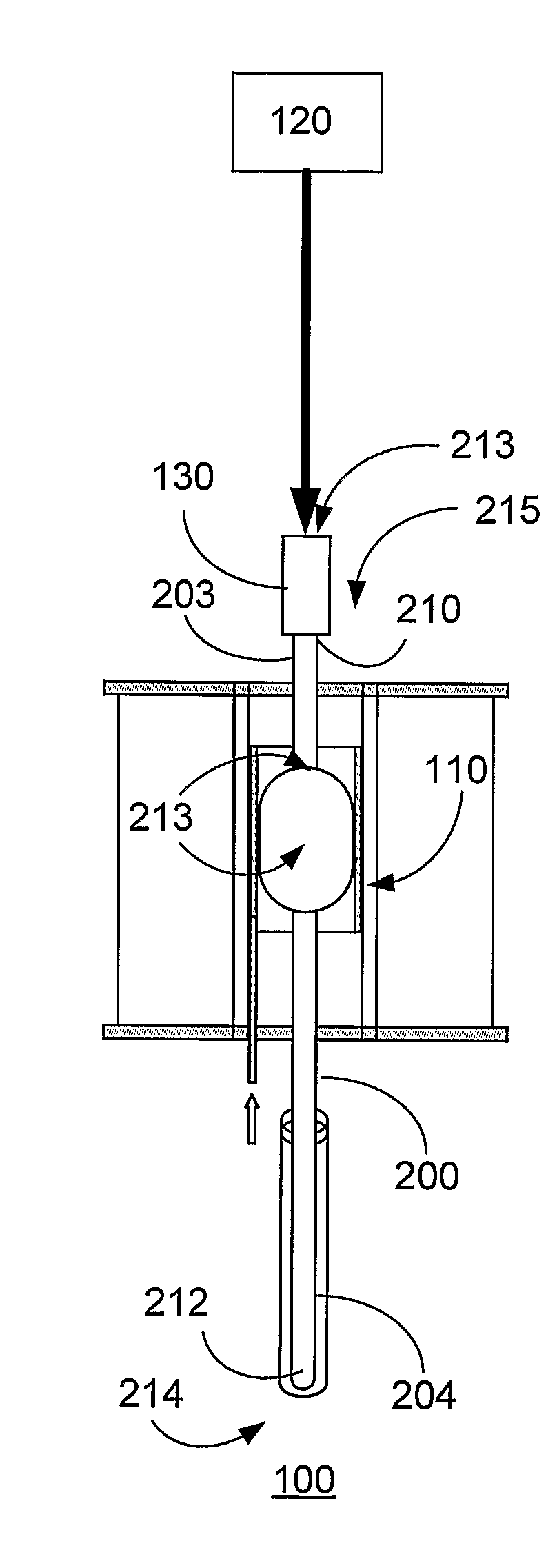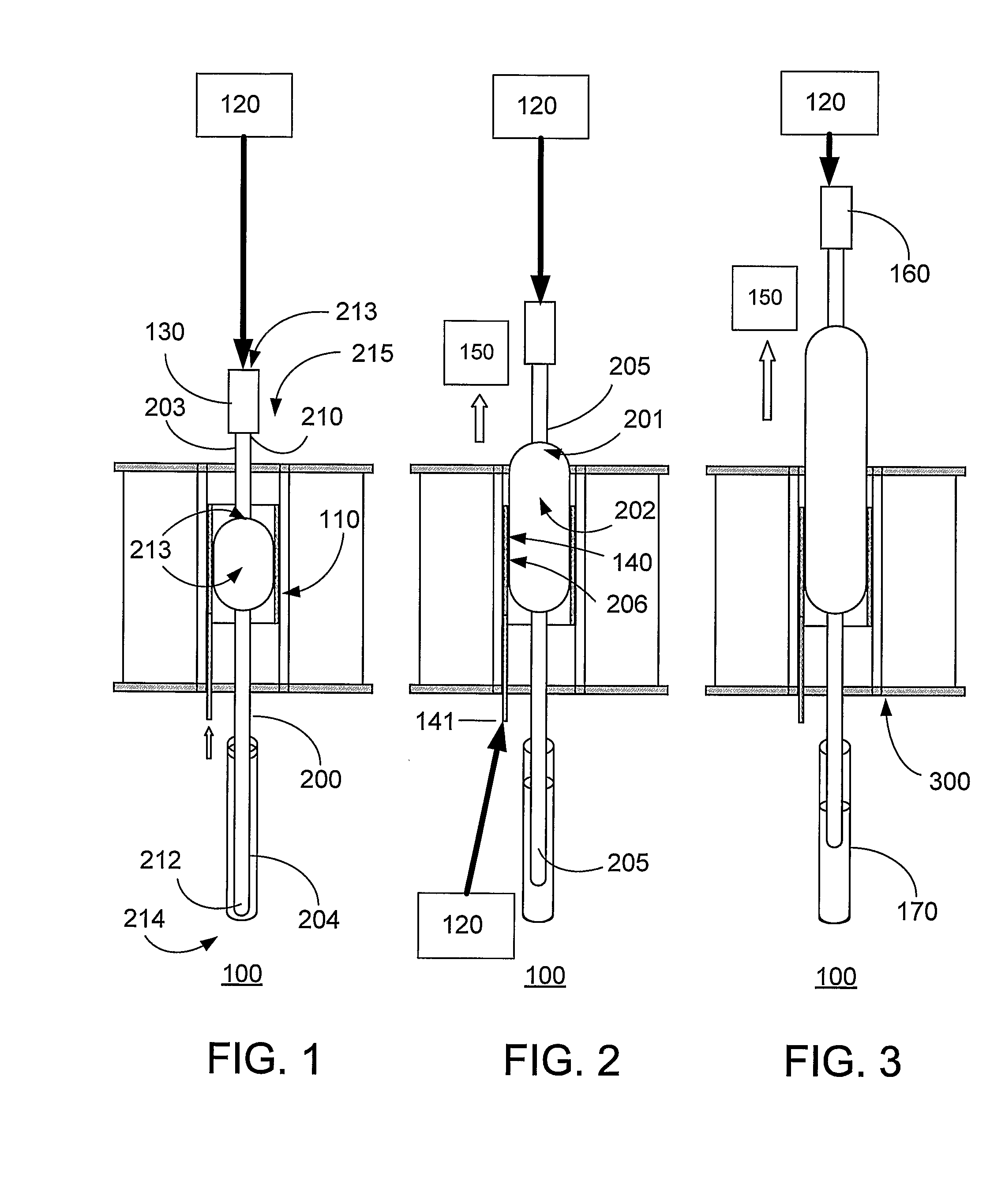Ultra Thin Glass Drawing and Blowing
- Summary
- Abstract
- Description
- Claims
- Application Information
AI Technical Summary
Benefits of technology
Problems solved by technology
Method used
Image
Examples
Embodiment Construction
[0031]The present invention relates to methods, systems, apparatus and products related to drawing and blowing of ultra thin glass substrates. In particular, the present invention relates to a process for manufacturing ultra thin glass, for example, for use in flexible display applications.
[0032]Given that displays historically have been rigid, glass substrates commonly have been made using a process known as the fusion process (e.g., downdraw process) to form high quality thin glass sheets that can be used in a variety of devices like flat panel displays. The fusion process is the preferred technique for producing glass sheets used in flat panel displays because the glass sheets produced by this process have surfaces with superior flatness and smoothness when compared to glass sheets produced by other methods. The general fusion process is described in numerous publications, such as U.S. Pat. Nos. 3,338,696 and 3,682,609, and is well-known in the art.
[0033]By way of example, the pr...
PUM
| Property | Measurement | Unit |
|---|---|---|
| Force | aaaaa | aaaaa |
| Diameter | aaaaa | aaaaa |
| Length | aaaaa | aaaaa |
Abstract
Description
Claims
Application Information
 Login to View More
Login to View More - R&D
- Intellectual Property
- Life Sciences
- Materials
- Tech Scout
- Unparalleled Data Quality
- Higher Quality Content
- 60% Fewer Hallucinations
Browse by: Latest US Patents, China's latest patents, Technical Efficacy Thesaurus, Application Domain, Technology Topic, Popular Technical Reports.
© 2025 PatSnap. All rights reserved.Legal|Privacy policy|Modern Slavery Act Transparency Statement|Sitemap|About US| Contact US: help@patsnap.com



